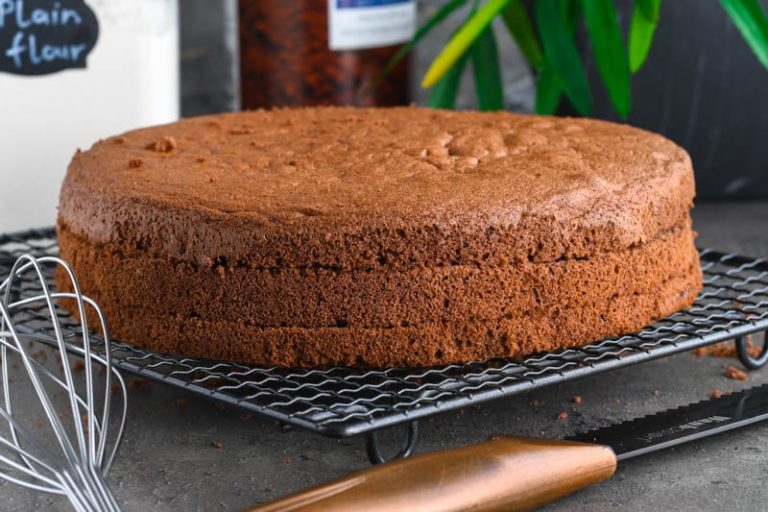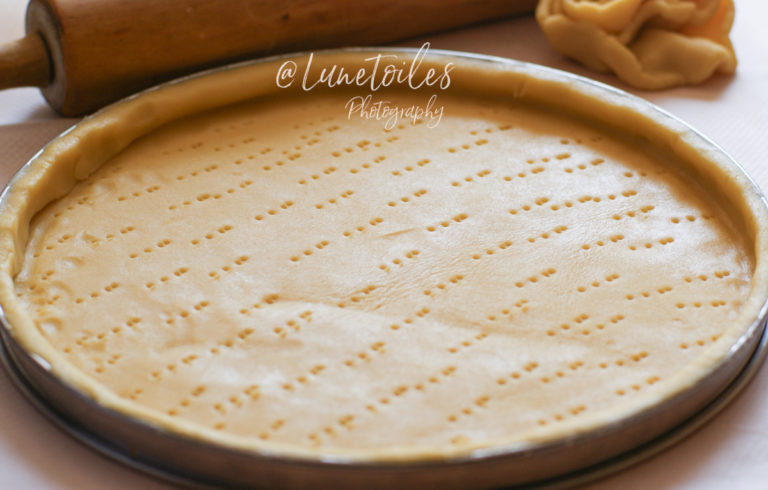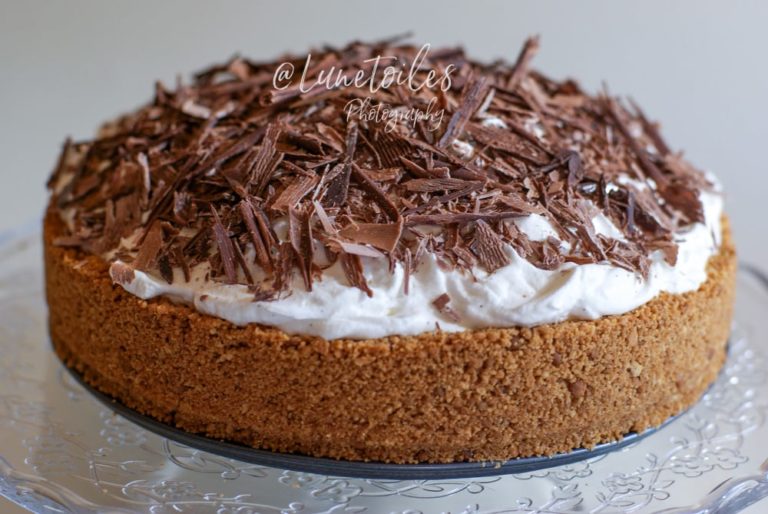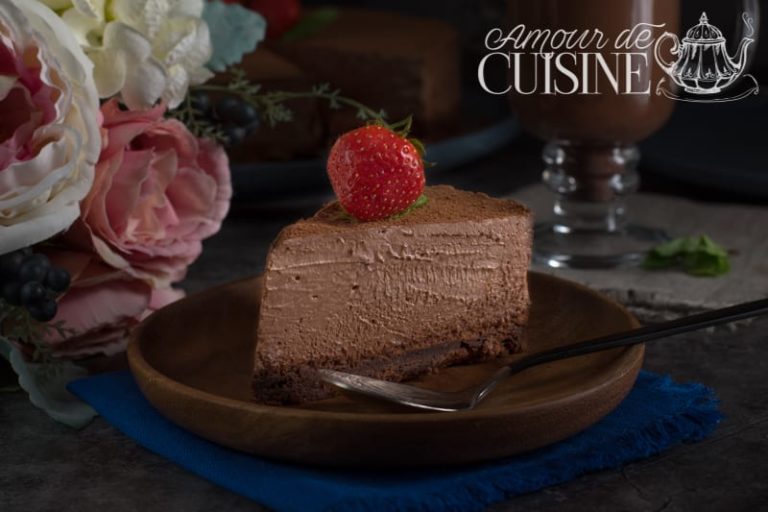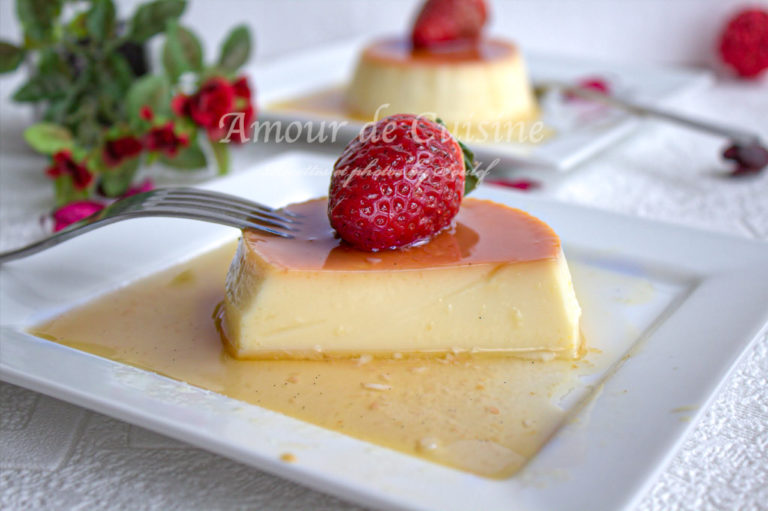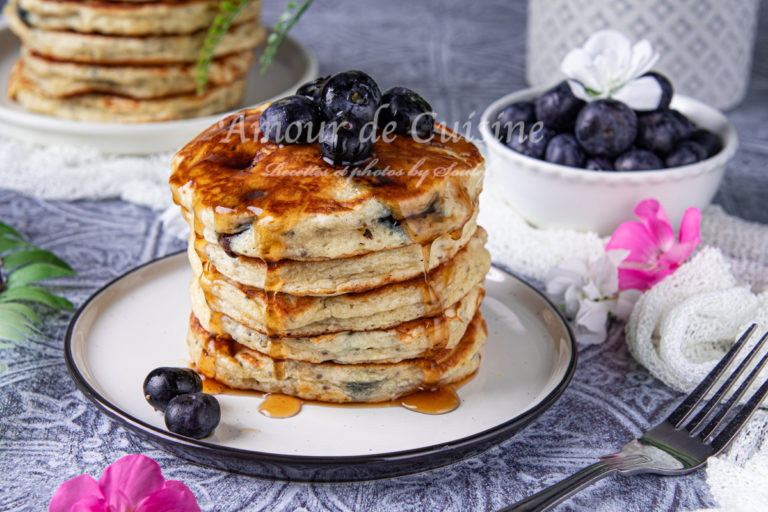How to make pastry cream-creme patissiere recipe
Discover the secrets to making velvety smooth vanilla pastry cream, also known as crème pâtissière.
Perfect for filling éclairs, tarts, and cakes, this french classic recipe blends rich, creamy texture with the irresistible flavor of vanilla.
Elevate your desserts effortlessly with this versatile and easy-to-follow homemade pastry cream guide.
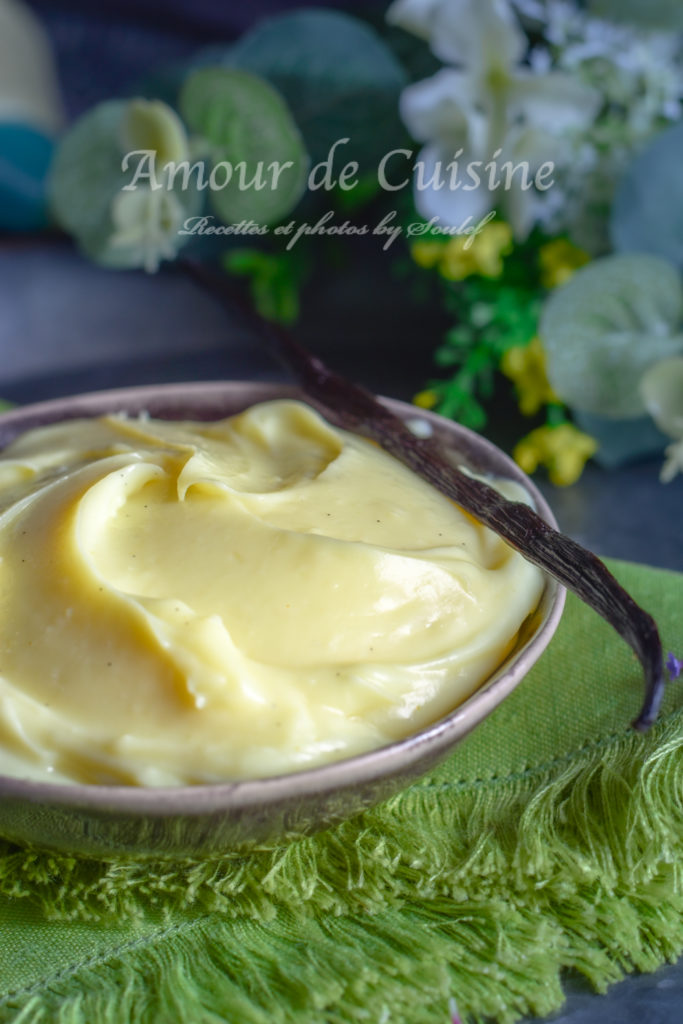
French vanilla pastry cream, Crème Pâtissière
Here is the ultimate recipe for vanilla pastry cream, or crème pâtissière—a luscious and versatile cream that transforms your desserts into bakery-worthy creations!
Whether you’re filling éclairs, layering cakes, or enhancing fruit tarts, this rich and creamy classic will elevate your treats to new heights.
In this version, we use cornstarch for a gluten-free twist on the traditional flour-based recipe.
Cornstarch gives the cream a lighter, silkier texture while maintaining its signature decadence.
If you prefer the old-fashioned approach, flour works perfectly too, but the cornstarch variation creates a smoother, more delicate result that melts in your mouth.
With just a few simple ingredients—milk, eggs, sugar, cornstarch, butter, and aromatic vanilla—you can create the best pastry cream you’ll ever make at home.
This recipe is designed for beginners and seasoned bakers alike, offering step-by-step guidance to ensure flawless results every time.
Get ready to impress family and friends with a crème pâtissière that tastes as though it came straight from a French patisserie.
This is a must-try recipe that guarantees creamy, dreamy perfection for every dessert.
Let’s dive in and create this irresistible vanilla pastry cream together!
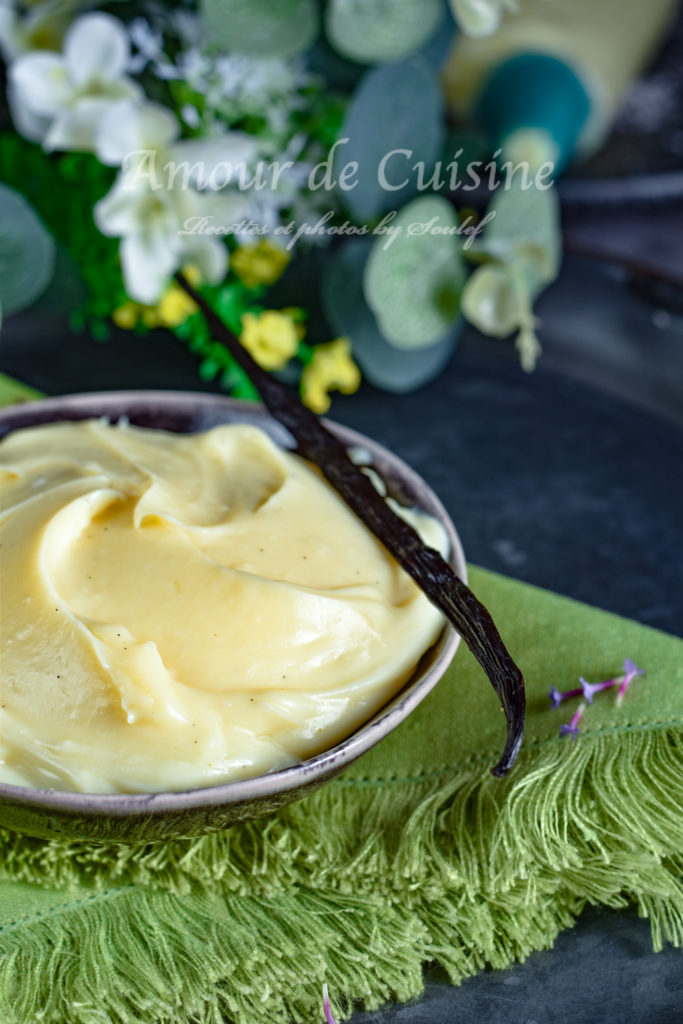
Ingredients to make vanilla pastry cream
- 500 ml of milk, Use very hot, almost boiling milk to incorporate smoothly with the other ingredients. The heat ensures the mixture thickens properly and eliminates any risk of lumps.
- 100 g of sugar, Opt for white powdered sugar to maintain the authentic color and subtle sweetness of classic pastry cream. This choice enhances the smoothness of the final cream without overpowering its delicate flavor.
- 4 egg yolks, Egg yolks are essential for the richness and thickness of pastry cream. They contribute to its luxurious texture and buttery yellow hue, elevating the cream to perfection.
- 60 g of cornstarch, Cornstarch is the secret to a thick and velvety pastry cream. Unlike custard, which is softer, cornstarch gives this cream its firm yet smooth consistency, making it ideal for fillings and layers.
- 2 sachets of vanilla sugar, Vanilla is the heart of this recipe. Ensure you use high-quality vanilla sugar to bring out the signature aroma and flavor of the cream. This key ingredient adds a fragrant, sweet note that ties everything together beautifully.
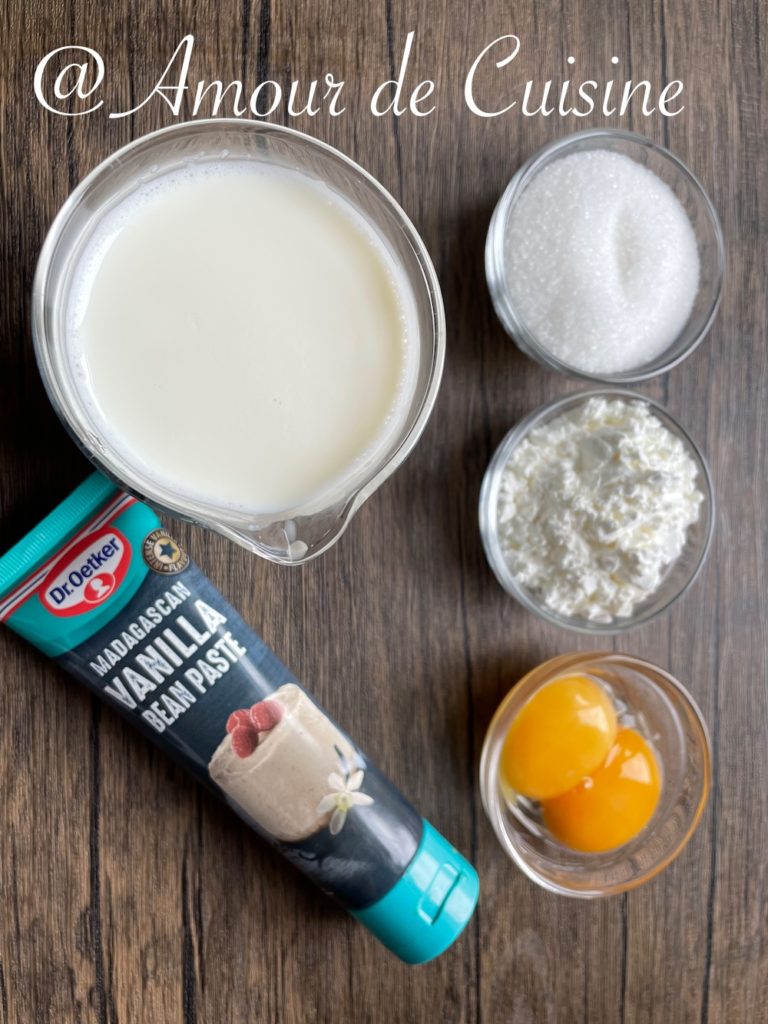
Step-by-step to make creme patissiere recipe
1- Whisk the egg yolks, sugar, and vanilla paste : In a large mixing bowl, combine the egg yolks, sugar, and vanilla paste (or extract). Using a hand whisk or electric mixer, beat the ingredients together until the mixture turns pale, light, and fluffy. Keep whisking until it doubles or even triples in volume—this step ensures a smooth and creamy base for your pastry cream.
2- Heat the milk : Pour the milk into a saucepan and heat it on the stove until it reaches a boil. Alternatively, you can heat it in the microwave. The milk must be extremely hot, as this will help temper the eggs and thicken the mixture later. Be cautious to avoid scalding the milk.
3- Incorporate the cornstarch into the egg mixture : Gradually sift the cornstarch into the egg yolk mixture to prevent lumps. Whisk thoroughly to ensure the cornstarch is fully incorporated and the mixture is smooth.
4- Temper the egg mixture with hot milk : While continuously whisking the egg mixture, slowly pour in the hot milk. Add the milk gradually to avoid cooking the eggs. You don’t need to add all the milk at once; start with half and whisk until smooth before adding more.
5- Cook the cream on the stove : Pour the combined mixture back into the saucepan. Place it over low to medium heat and whisk constantly. Pay attention to the bottom and sides of the pan to prevent scorching.
6- Cook until thickened
Continue stirring and cooking the mixture until it thickens to a creamy consistency. The cream should coat the back of a spoon and hold its shape when stirred. Once thickened, remove it from the heat immediately to prevent overcooking.
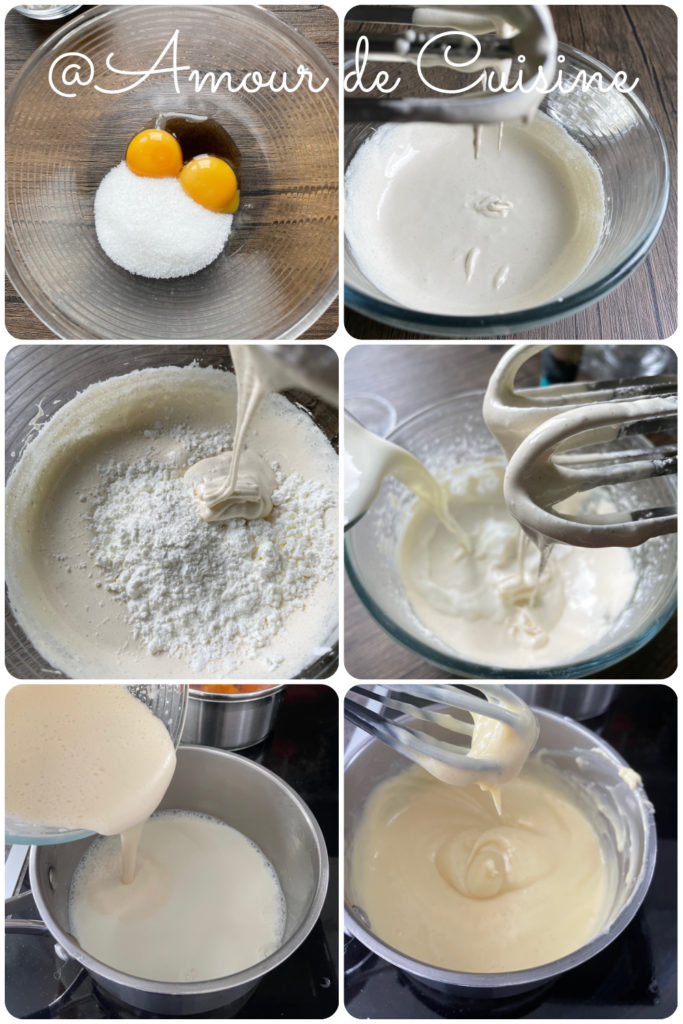
Tips for Tempering Eggs with Hot Milk
Tempering eggs can be a delicate step, so take extra care to prevent them from curdling when adding hot milk.
- Ask for help if you’re a beginner
If you’re new to this process, enlist a helper. One person can whisk the egg mixture continuously while the other slowly pours the hot milk in a thin, steady stream. This teamwork ensures smooth and even tempering. - Use a kitchen towel for stability
If you’re working alone, place the bowl with the egg-sugar mixture on a kitchen towel to keep it from slipping. This frees up your hands and makes the process more manageable. - Pour the milk from a small, lightweight container
Transfer the hot milk into a small, lightweight measuring cup or pitcher. This allows you to control the flow more easily with one hand while whisking the egg mixture with the other. Pour slowly and steadily to gently raise the temperature of the eggs without cooking them.
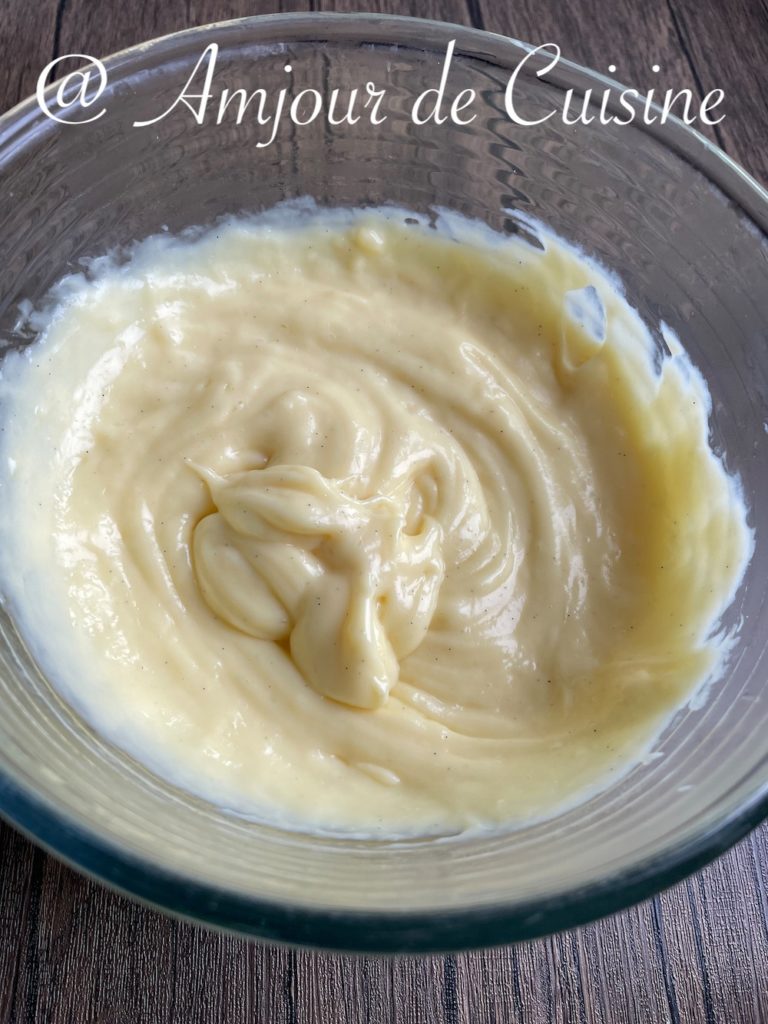
Easy Tips for Making Perfect Pastry Cream
– Heat the Milk Properly : While scalding milk isn’t essential with pasteurized milk, heating it thoroughly helps to infuse the fresh vanilla flavor effectively. Use very hot milk for the best results in blending with the other ingredients.
– Prepare the Egg and Sugar Mixture Correctly : In a separate bowl, whisk the eggs, sugar, and cornstarch until smooth. This ensures the cornstarch is fully incorporated and prevents lumps. The sugar and eggs will create a thick, well-blended batter that mixes seamlessly with the milk.
– Keep Whisking as It Cooks : Continuously whisk the milk-egg mixture while it cooks. This prevents curdling, especially as the mixture approaches boiling. If the heat becomes too intense, remove the pan from the stove momentarily while you continue to stir.
– Cook the Custard Thoroughly : Let the custard come to a boil to ensure the cornstarch is fully cooked, eliminating any starchy aftertaste. Stir constantly as it boils, and cook for 1–2 more minutes over low-medium heat to achieve the perfect consistency.
– Strain for Extra Smoothness : Straining the custard isn’t mandatory, but it’s a great step to remove any lumps and guarantee a silky texture.
– Cool the Custard Properly : To cool the custard quickly, spread it out in a large bowl or shallow pan to create a thin layer. Cover the surface directly with cling film to prevent a skin from forming. Let it cool completely before using it in your desserts.
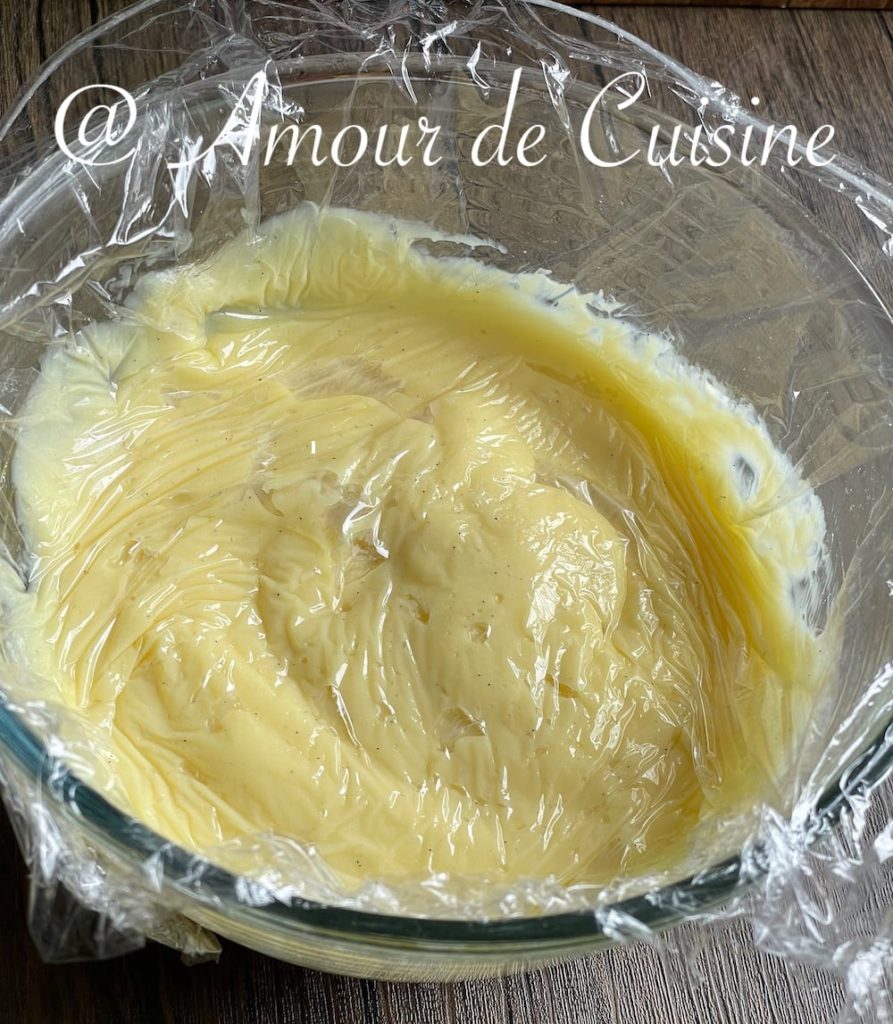
Common Pastry Cream Mistakes and How to Fix Them
– My pastry cream is lumpy: This usually happens if the mixture was heated too quickly or not stirred thoroughly during cooking.
Solution: Use an immersion blender to smooth out the cream. If there are only a few lumps, strain the mixture through a fine-mesh sieve.
– My pastry cream is too runny and hasn’t thickened properly: This means it wasn’t cooked long enough.
Solution: Return the cream to the heat and continue cooking while stirring constantly until it thickens to the desired consistency.
– My pastry cream is too thick: This often results from using too much cornstarch or not enough milk.
Solution: Gently fold in a small amount of whipped cream to loosen the texture. Be careful not to add too much, or you’ll end up with diplomat cream instead.
– My pastry cream has turned gray: This happens when an aluminum pan is used, as it reacts with the ingredients.
Solution: Always use a stainless steel or non-stick saucepan when making pastry cream.
– My pastry cream is grainy: This occurs when the milk is too hot or the eggs weren’t whisked properly when combined, causing them to curdle.
Unfortunately, this can’t be fixed. Next time, whisk continuously and temper the eggs correctly to prevent curdling.
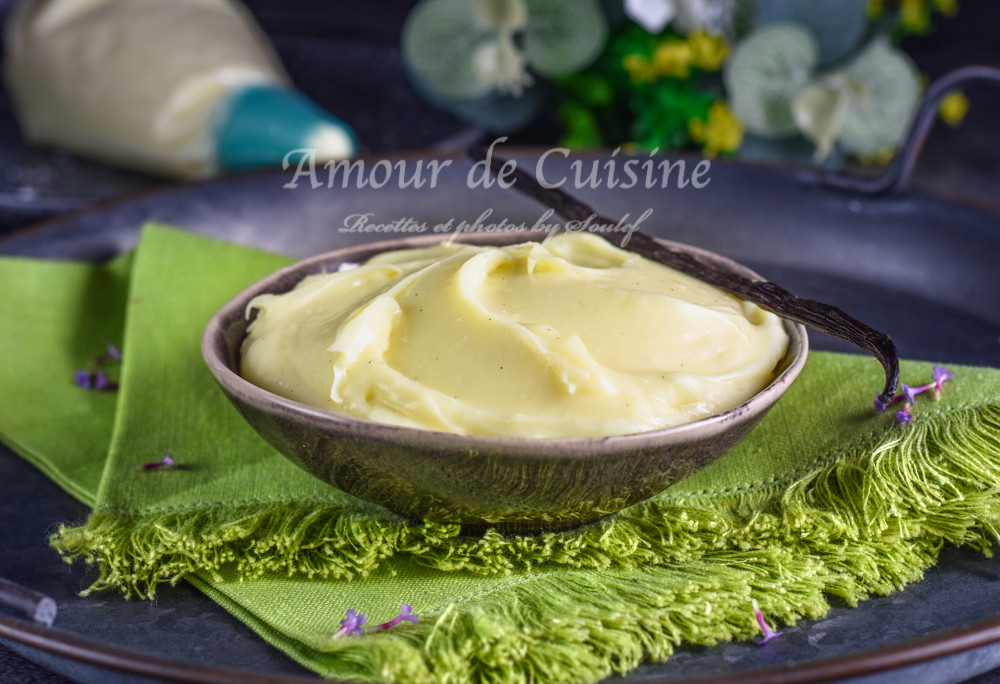
How to store pastry cream?
– Never leave pastry cream at room temperature. Since it contains milk and eggs, it can spoil quickly if not properly refrigerated.
– Do not freeze pastry cream, as the starch and protein bonds responsible for its thickness will break down when frozen. Upon thawing, the cream will release excess water and lose its consistency.
– After cooling, store the cream in the refrigerator in an airtight container, placing cling film directly on the surface to prevent a skin from forming.
– When properly cooked and prepared, pastry cream can be stored in the fridge for 3 to 4 days.
Other french recipes to try
- French Toast Recipe
- Classic french crepes easy recipe
- Gingerbread Loaf Cake, pain d’epice recipe
- King’s Cake brioche from Provence-brioche des rois recipe
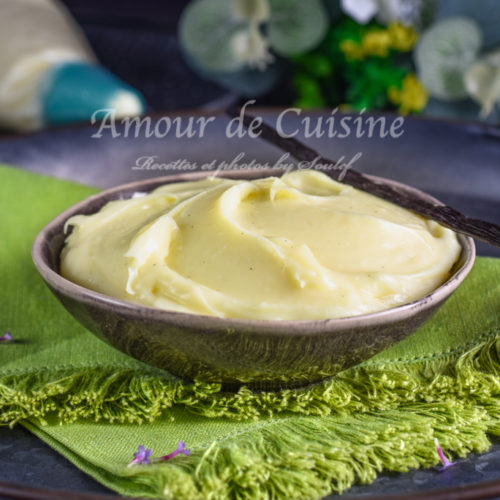
Crème patissiere recipe
Ingredients
- 500 ml of milk
- 100 g of sugar
- 4 egg yolks
- 60 g of cornstarch
- 2 sachets of vanilla sugar
Instructions
- In a large mixing bowl, combine the egg yolks, sugar, and vanilla paste (or extract). Using a hand whisk or electric mixer, beat the ingredients together until the mixture turns pale, light, and fluffy. Keep whisking until it doubles or even triples in volume—this step ensures a smooth and creamy base for your pastry cream.
- Pour the milk into a saucepan and heat it on the stove until it reaches a boil. Alternatively, you can heat it in the microwave. The milk must be extremely hot, as this will help temper the eggs and thicken the mixture later. Be cautious to avoid scalding the milk.
- Gradually sift the cornstarch into the egg yolk mixture to prevent lumps. Whisk thoroughly to ensure the cornstarch is fully incorporated and the mixture is smooth.
- While continuously whisking the egg mixture, slowly pour in the hot milk. Add the milk gradually to avoid cooking the eggs. You don’t need to add all the milk at once; start with half and whisk until smooth before adding more.
- Pour the combined mixture back into the saucepan. Place it over low to medium heat and whisk constantly. Pay attention to the bottom and sides of the pan to prevent scorching.
- 6- Cook until thickened
- Continue stirring and cooking the mixture until it thickens to a creamy consistency. The cream should coat the back of a spoon and hold its shape when stirred. Once thickened, remove it from the heat immediately to prevent overcooking.

